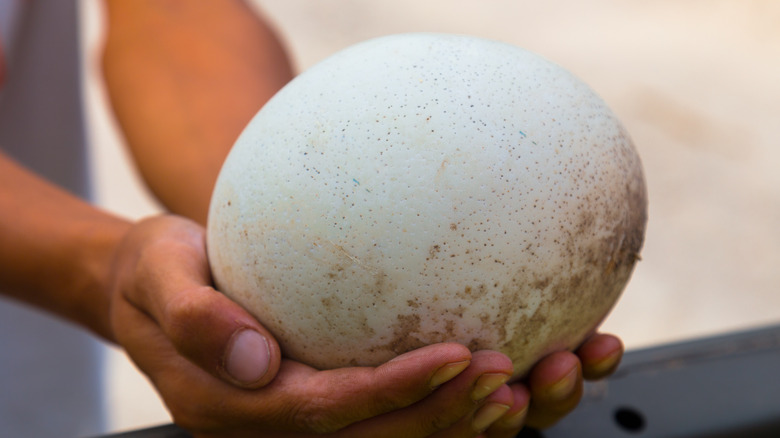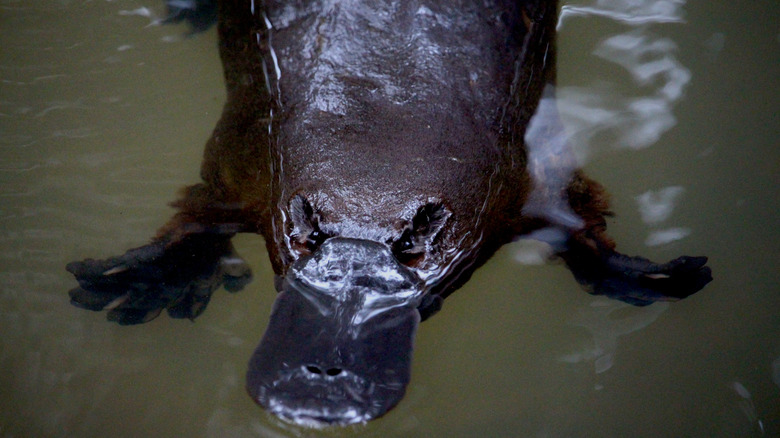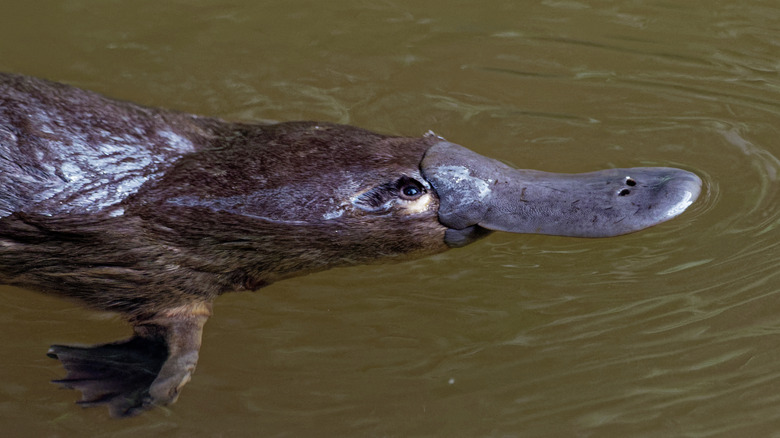The Only Venomous Mammal To Lay Eggs
The natural world is an incredible place. From Niagara Falls to Mount Everest, it's difficult to express how fortunate we are to inhabit a planet with such wonders. This extends, of course, to the animal kingdom.
We humans may have mastered everything from airplanes to submarines, but the other wonderful creatures we share the Earth with have talents and traits far beyond us. For all the self-confidence we feel, with our clothes, technology and so on, we're ultimately just another mammal.
According to the Journal of Mammalogy (via Oxford Academic) in 2018, there were 5,341 extant species of mammals on Earth. Very, very few of them are venomous, and even fewer of them lay eggs. How many of them boast both of these unusual characteristics? Just one, remarkably. Needless to say, this odd creature is one of the most fascinating on Earth. Surprising nobody at all, it's found in Australia, that stunning haven for fascinating (and sometimes terrifying) creatures of all shapes and sizes.
As Britannica reports, mammals are largely defined by their warm blood and their mammary glands for feeding their young. Almost every species is viviparous, which means that they give birth rather than laying eggs. It may be assumed that all mammals do this, but as is so often the case, a few dare to be different.
What else but the duck-billed platypus?
Egg-laying mammals are known as monotremes (World Atlas performs the vital public service of reporting that the word derives from the fact that they poop and lay eggs from the same orifice). The duck-billed platypus and the echidna are the only known monotremes. Treehugger notes that the four species of echidna (Sir David's long-beaked echidna, the eastern long-beaked echidna, the western long-beaked echidna and the short-beaked echidna) share this trait, making monotremes exclusive to New Guinea and Australia.
In May 2022, the Chester Standard reported that a platypus specimen that proved these magnificent creatures hatched from eggs was found in the University Museum of Zoology in Cambridge. William Caldwell collected them during the 19th century, and they had remained uncatalogued. Assistant director Jack Ashby reportedly stated, "It's one thing to read the 19th-century announcements that platypuses and echidnas actually lay eggs ... to have the physical specimens here, tying us back to that discovery almost 150 years ago, is pretty amazing."
Naturally, we'd expect nothing less of the platypus, which everybody knows is among the most curious and bizarre animals on the planet. It has another surprise up its sleeve, too: It's also venomous.
Very, very venomous
Venom is certainly a rarity among mammals. According to World Atlas, only seven known species have venom, including the European mole (which can stun its prey with venomous spit) and vampire bats (which have similarly dangerous saliva intended to prevent blood from their bites from coagulating). The duck-billed platypus is another, though it seems only the males retain their venom.
In a PressPac entitled "Unlocking the mystery of the duck-billed platypus' venom," the American Chemical Society shares just how potent this venom is: "The males can deliver a mega-sting that causes immediate, excruciating pain, like hundreds of hornet stings, leaving victims incapacitated for weeks."
Spurs in the back legs of the animal administer this venom, World Atlas goes on, spurs that females of the species lose as they grow. The American Chemical Society states that one component of it, Heptapeptide 1, seems to make it so potent because of the way it interacts with the nerve cells. Yikes.
One thing's for sure: The duck-billed platypus is as frightening as it is unique.


